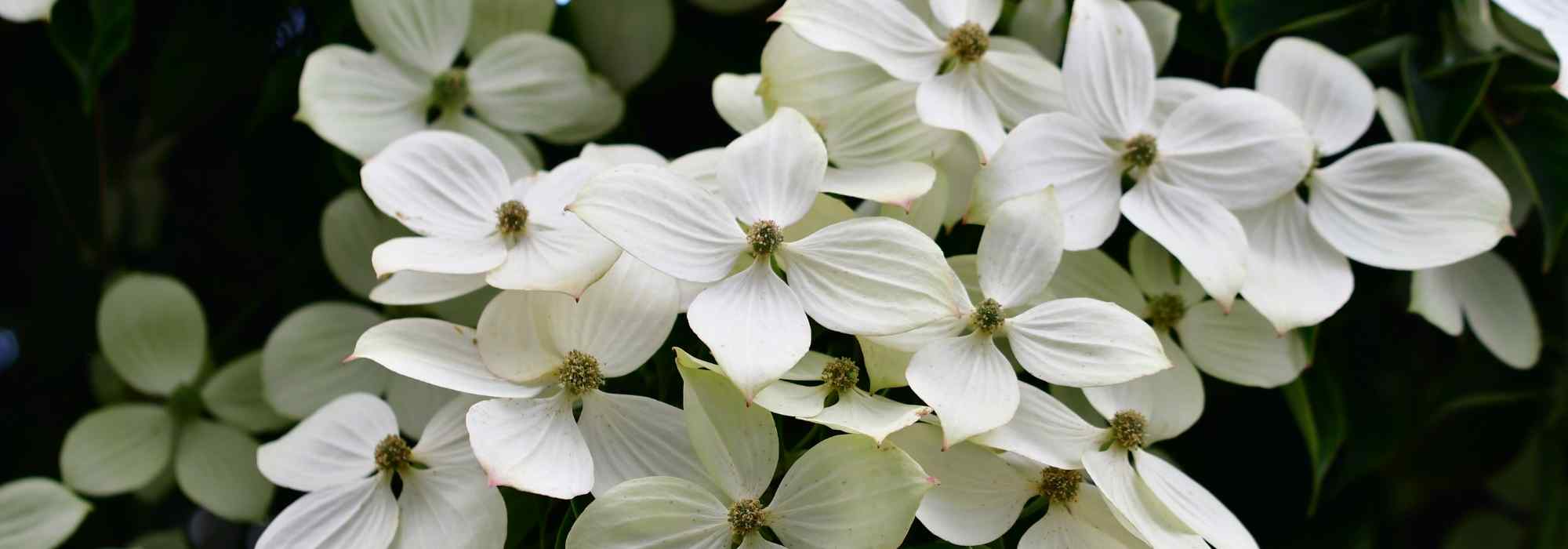
5 ideas for pairing flowering dogwood
Beautiful setting for your Cornus
Contents
Les “flowering dogwoods” include famous Cornus kousa, Cornus florida or Cornus nuttallii, but also other species such as Cornus angustata or Cornus capitata, not forgetting hybrids, notably Cornus x rutgersensis. This group is poorly named, because it is not the flowers that move us, but rather their large bracts that surround the flowers: white, pink or sometimes even yellow. Indeed, what an astonishing sight this starry flowering of the flowering dogwoods is! But let us not forget their colourful autumn foliage and even their graphic presence in winter.
How to pair such large bushes or small trees, true botanical jewels gracing your garden? Is it better to plant them as solitary specimens or, on the contrary, showcase them with companion plants that serve as a setting? You can choose the second option. Here are some ideas for pairing flowering dogwoods.
→ Discover our complete fact sheet on the Cornus Kousa
Made in Japan
Fancy a little corner of Kyoto in your garden? Why not try a Japanese-style area by choosing a few iconic plants from Japan. Let’s start with Cornus kousa ‘Satomi’, a classic among Japanese dogwoods, with its pink bracts between May and June and green foliage turning scarlet in autumn.
To tide us over until the dogwood’s flowering, plant close by a Prunus serrulata ‘Amanogawa’. This handsome Japanese cherry produces pale pink flowering from April and takes up almost no space thanks to its columnar habit. With its very graphic, table-like habit, Viburnum plicatum ‘Mariesi’ will assert its presence all year round. It also bears beautiful inflorescences in spring and flamboyant foliage in autumn. At the feet of this little group, plant some Coniogrammes emeiensis, aka bamboo-fern, which will form an original little groundcover. They will be edged by Hakonechloa macra ‘Aureola’, an herb from Japan with variegated foliage of golden yellow and cream.
Some Japanese anemones ‘Robustissima’ can complete the picture and add a little height to other perennials. What? You still have room for a bush? Fine. A Japanese maple ‘Shaina’, a compact ball of red foliage with rare elegance all year round — would that suit you?
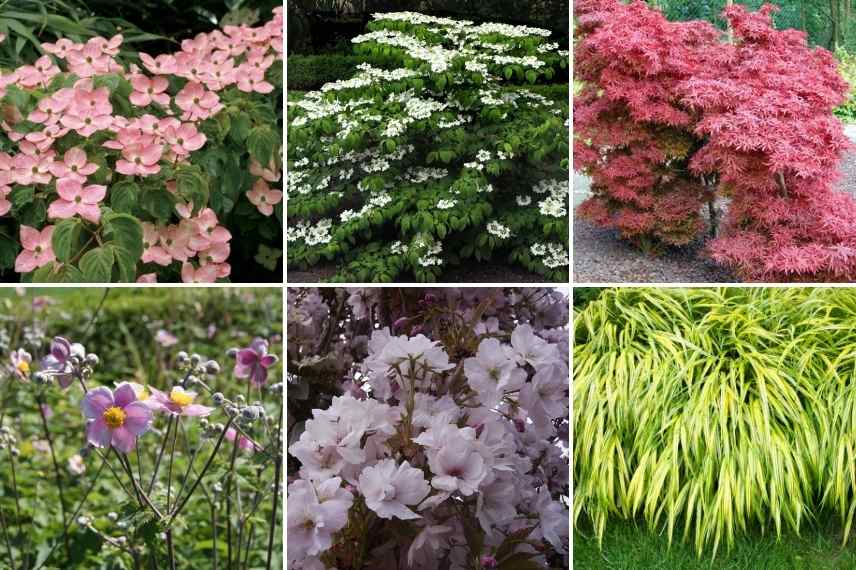
Cornus kousa ‘Satomi’, Viburnum plicatum ‘Mariesi’, Japanese maple ‘Shaina’, Japanese anemones ‘Robustissima’, Prunus serrulata ‘Amanogawa’, et Hakonechloa macra ‘Aureola’
A radiant spring
In theory, Cornus kousa or Japanese dogwoods can already flower in May, but June is when you are most likely to enjoy their flowering. Cornus kousa ‘Scarlet Fire’ is absolutely spectacular at that time thanks to its intense fuchsia-pink bracts. This dogwood is moreover full of qualities: earlier flowering than its counterparts, young purple shoots at bud burst period, remarkably coloured fruits and excellent disease resistance.
One might think it is fine on its own planted alone, but dressing its base will set it off even more while keeping freshness near its roots. Deutzia hybrid ‘Strawberry Fields’ and a Hydrangea macrophylla ‘Stargazer’ are two small bushes with pink-toned flowering appearing in June. They will perfectly accompany the dogwood’s flowering without ever attempting to eclipse it. As a groundcover, a simple but always effective tapetum of Brunnera macrophylla ‘Jack Frost’ scattered here and there with some hostas will be welcome.
And why not try a bush capable of rivalling the dogwood in beauty? So it does not get too big-headed… Magnolia brooklynensis ‘Eva Maria’ will do the trick perfectly! It is a rather rare American magnolia flowering late in spring in lovely pink “tulips”.
Discover other Cornus
View all →Available in 0 sizes
Available in 0 sizes
Available in 2 sizes
Available in 2 sizes
Available in 2 sizes
Available in 3 sizes
Available in 1 sizes
Available in 2 sizes
Available in 2 sizes
Available in 1 sizes
A flamboyant autumn
Flowering dogwoods are not only beautiful because of their flowers. Most put on spectacular colours in autumn. This is particularly true of Cornus florida ‘Cherokee Chief’! This small American flowering dogwood displays a flamboyant red‑orange show from October onwards.
To accompany it in its autumnal display, forget Nyssa sylvatica, a distant American cousin that might steal the show. Instead, opt for slightly softer or more sophisticated autumnal colours. Two or three small Abelia ‘Caramel Charm’ and a Nandina domestica ‘Fire Power’ will set off ‘Cherokee Chief’’s foliage without ever upstaging it. At the base of the bushes: a few Carex ‘Milk Chocolate’ with coppery highlights in autumn and small Aster dumosus ‘Anneke’ will bring colourful touches.
But… one dogwood seems to have spotted a patch of light and is trying to slip quietly into the border: Cornus florida ‘Firebird’. This one, with its variegated foliage turning reddish‑purple in autumn, would be far better as a standalone specimen, planted directly opposite Cornus florida ‘Cherokee Chief’, like two guardians flanking a garden entrance or a long avenue.
Read also
Pruning cornus to maintain their coloursA colourful winter
What, winter is dull? No… Winter can be very colourful in the garden if you choose your plants well. First, choose a flowering dogwood with evergreen foliage and interesting bark: Cornus hongkongensis. It is a flowering dogwood with abundant summer flowering, evergreen foliage showing beautiful autumn colours and a beige bark striated with paler lines. What more could you ask for?
To add some colour, you can of course go for dogwoods with decorative wood (what? More dogwoods!), notably reliable varieties: Cornus alba ‘Bâton Rouge’ with red branches, Cornus sericea ‘Flaviramea’ with yellow wood or Cornus sanguinea ‘Mid Winter Fire’ with orange branches. A willow ‘Mount Aso’ will also carry young red branches, but will produce very decorative pink aments that will perfectly complement the flowering of the carpet of winter heathers ‘Kramer’s Rote’ at its base, and even of a Hamamelis x vernalis ‘Amethyst’ with pink-purple winter flowering. Finally, a Korean fir, Abies koreana ‘Silberlocke’, will provide another evergreen element throughout the year.
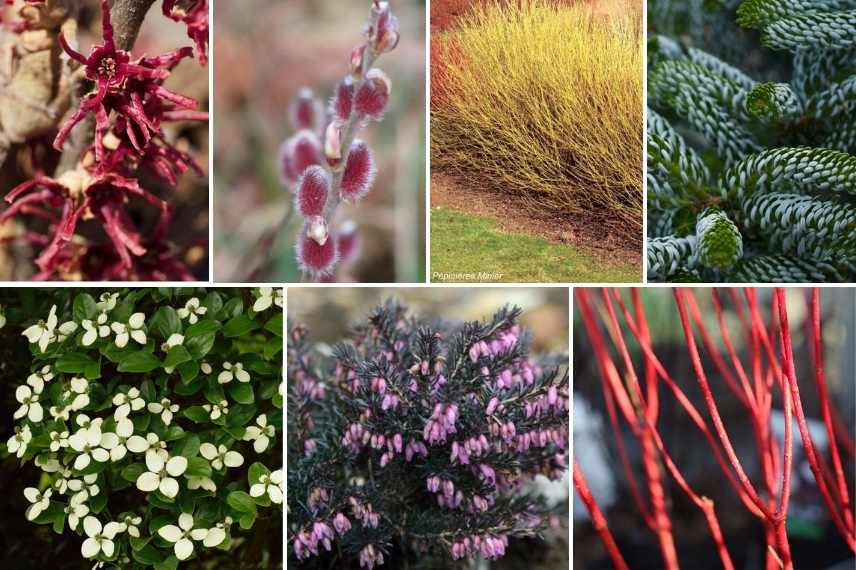
Cornus hongkongensis (bottom left), accompanied by: Hamamelis ‘Amethyst’, Salix ‘Mount Aso’, Cornus sericea ‘Flaviramea’, Abies koreana ‘Silberlocke’, winter heathers ‘Kramer’s Rote’ and Cornus sanguinea ‘Mid Winter Fire’
Collection of acidophilous plants
Flowering dogwoods are commonly, somewhat wrongly, classed among bushes described as heather soil. So it is hard to ignore such a pairing. But beware! Even if flowering dogwoods appreciate acidity in the soil, they nevertheless hate being planted in pure heather soil because this substrate is poor and does not retain water. Cornus capitata, or Himalayan dogwood, is little known. Yet it is the only flowering dogwood to produce pale yellow bracts. However, it is not fully hardy; it will suffer from -10°C onwards, and its foliage, theoretically evergreen, is rather semi-evergreen (the milder the winter, the more the foliage persists).
In regions with mild winters and rather rainy summers, the Himalayan dogwood would be perfect alongside other acidophilous plants. Like the azalea ‘Lingot d’or’ and Rhododendron luteum, both deciduous and with yellow flowering. These two azaleas will flower at the same time as the dogwood. A classic in beds described as heather soil, Pieris japonica ‘Flaming Silver’ will also find its place near these three bushes, adding small pink then red touches thanks to its foliage. Finally, the choice of a groundcover is wide for a cool, acidic semi-shade, but a beautiful tapetum of Epimedium x versicolor ‘Sulphureum’ will work wonders: yellow flowers between April and May and evergreen foliage with changing hues from copper to purple through green during the season.
Flowering dogwoods share with magnolias the same requirements for cool summers, well-drained soil in winter and an acidic soil pH. If only one could find a small magnolia with yellow flowers that blooms at the same time as Cornus capitata to answer it effectively and… Oh, wait! That Magnolia exists! It is Magnolia acuminata ‘Butterfly’: an excellent American magnolia with yellow flowers.
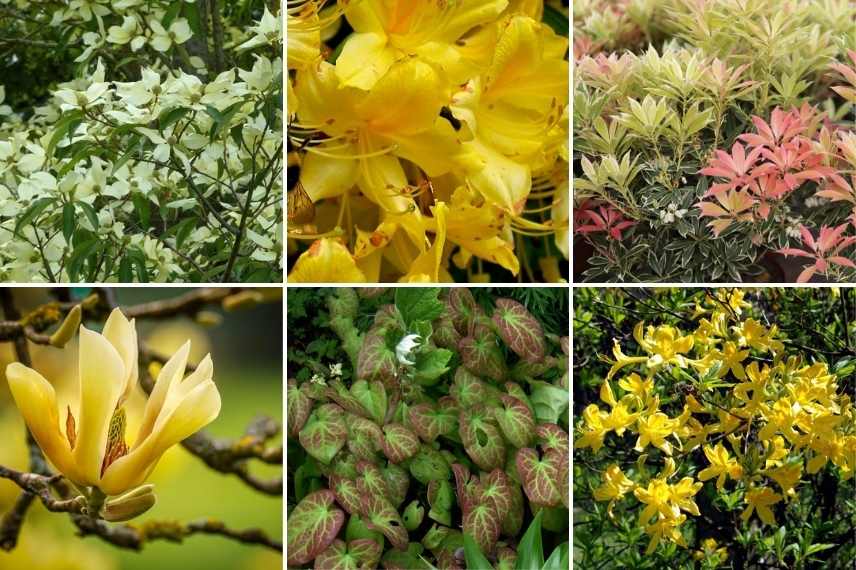
Cornus capitata in association with: Azalea ‘Lingot d’or’, Pieris ‘Flaming Silver’, Magnolia acuminata ‘Butterfly’,Epimedium x versicolor ‘Sulphureum’, and Rhododendron ‘Luteum’
To go further...
→ Find all our flowering dogwoods in our online nursery.
To learn all about flowering dogwoods, read Flowering dogwoods: planting, pruning and maintenance.
- Subscribe!
- Contents
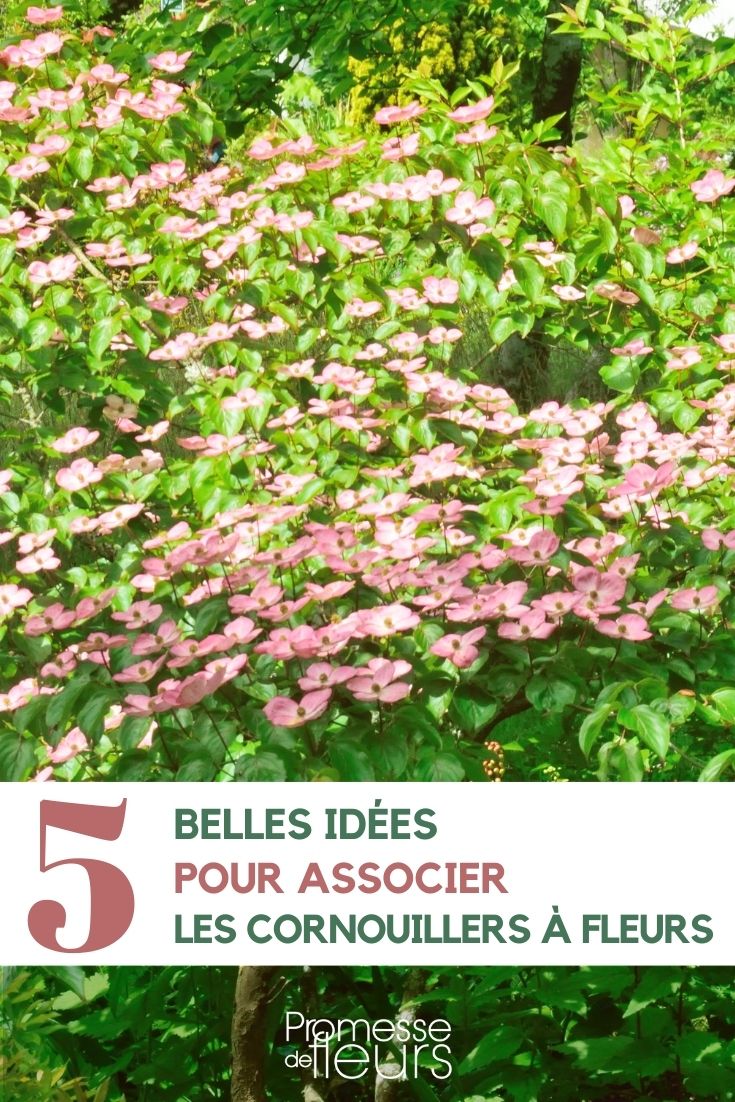































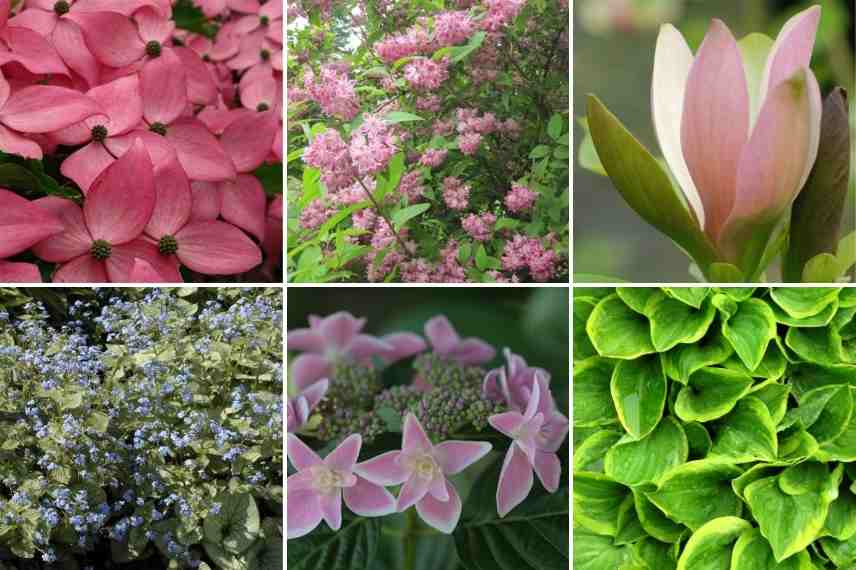
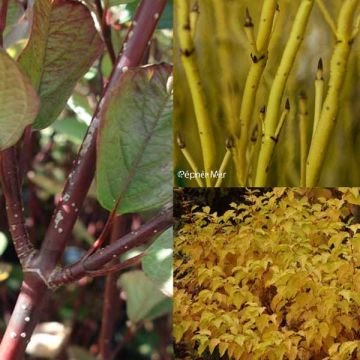
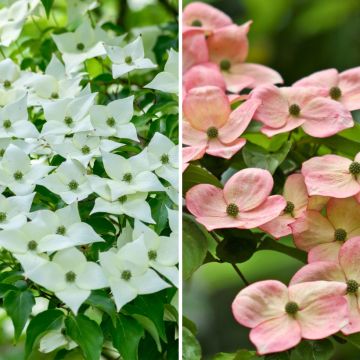
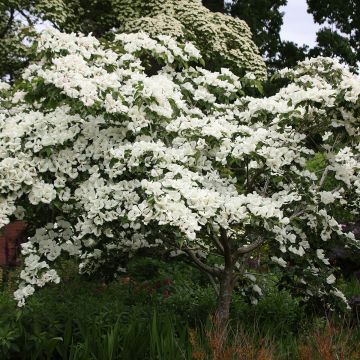
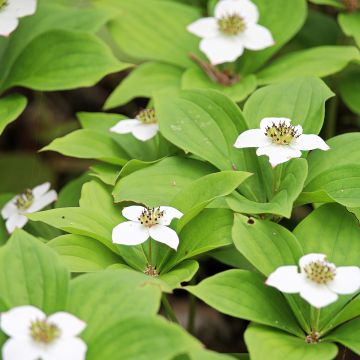
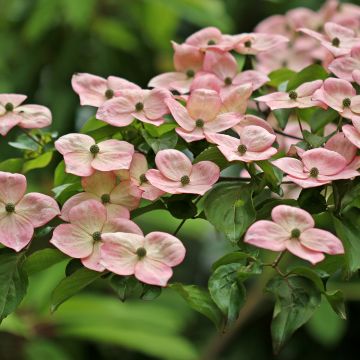
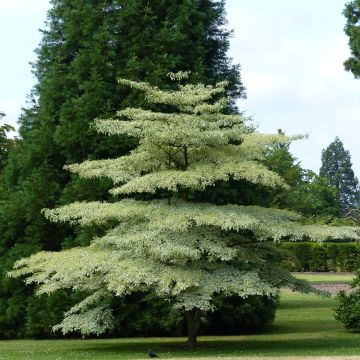
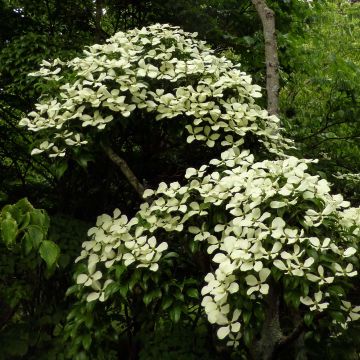
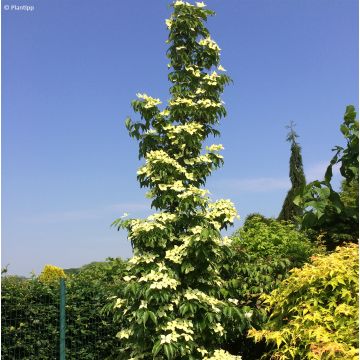
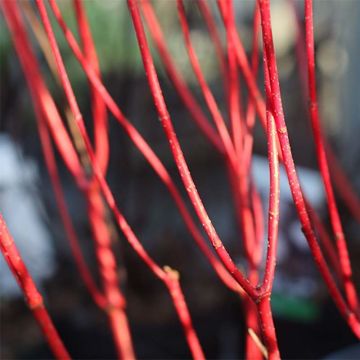
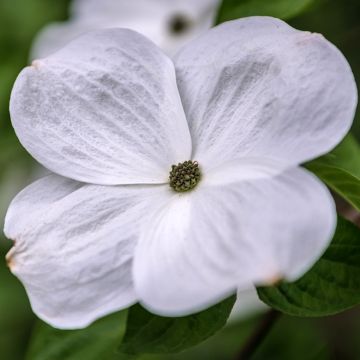

Comments